Themed collection ChemComm 60th Anniversary Historic Papers from North America

Self-assembling peptide scaffolds for regenerative medicine
We discuss current and future peptidic scaffolds as regenerative therapies, with a focus on development of complex and integrated systems.

Chem. Commun., 2012,48, 26-33
https://doi.org/10.1039/C1CC15551B
Organic nonlinear optical materials: where we have been and where we are going
Organic nonlinear optical materials for electro-optical and multiphoton absorption applications have improved significantly in recent years based upon the development of structure–property relationships on the molecular level.

Chem. Commun., 2006, 131-134
https://doi.org/10.1039/B512646K
Nanostructured electrochromic smart windows: traditional materials and NIR-selective plasmonic nanocrystals
Electrochromic devices based on plasmon resonances in colloidal nanocrystals represent an important step towards realizing smart windows with ideal performance.
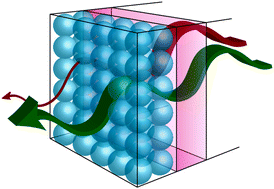
Chem. Commun., 2014,50, 10555-10572
https://doi.org/10.1039/C4CC03109A
Recent developments in transition metal carbides and nitrides as hydrogen evolution electrocatalysts
An overview of transition-metal carbide and nitride materials as heterogeneous catalysts for electrochemical hydrogen evolution.
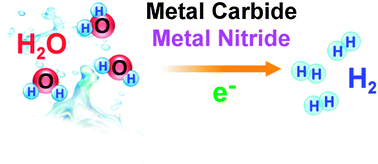
Chem. Commun., 2013,49, 8896-8909
https://doi.org/10.1039/C3CC44076A
Magnetically retrievable catalysts for organic synthesis
The use of magnetic nanoparticles (MNPs) as a catalyst support in organic synthesis is summarized. The recovery of expensive catalysts after catalytic reaction and reusing them without losing their activity is an essential feature in the sustainable process development; this article highlights the progress in the synthesis and catalytic applications of magnetic catalysts in organic synthesis.
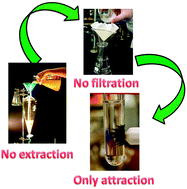
Chem. Commun., 2013,49, 752-770
https://doi.org/10.1039/C2CC35663E
MOFs for CO2 capture and separation from flue gas mixtures: the effect of multifunctional sites on their adsorption capacity and selectivity
Understanding the effect of functional sites on the MOF CO2 adsorption capacity and selectivity.
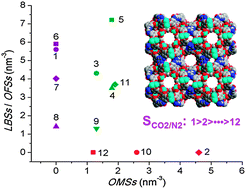
Chem. Commun., 2013,49, 653-661
https://doi.org/10.1039/C2CC35561B
Heterogeneous nanostructured electrode materials for electrochemical energy storage
Recent advances in applying heterogeneous nanostructures as electrode materials for electrochemical energy storage devices such as lithium–ion batteries and supercapacitors.
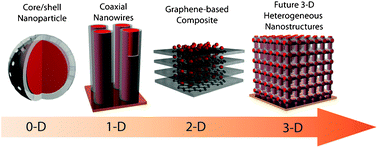
Chem. Commun., 2011,47, 1384-1404
https://doi.org/10.1039/C0CC03158E
Gas storage in porous metal–organic frameworks for clean energy applications
Depletion of fossil oil deposits and the escalating threat of global warming have put clean energy research on the urgent agenda. In this feature article, we provide an overview of the current status of clean energy applications of porous MOFs, including hydrogen storage, methane storage and carbon dioxide capture.
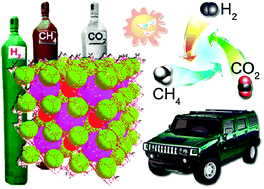
Chem. Commun., 2010,46, 44-53
https://doi.org/10.1039/B916295J
Supramolecular donor–acceptor hybrids of porphyrins/phthalocyanines with fullerenes/carbon nanotubes : electron transfer , sensing, switching, and catalytic applications
Recent developments in the construction of self-assembled supramolecular donor–acceptor conjugates with porphyrins/naphthalocyanines as the donor and fullerenes/nanotubes as the electron acceptors by adopting different self-assembly protocols are discussed.

Chem. Commun., 2009, 4913-4928
https://doi.org/10.1039/B905753F
Recent advancements and challenges of palladiumII-catalyzed oxidation reactions with molecular oxygen as the sole oxidant
Molecular oxygen can be used as the sole stoichiometric oxidant for a variety of PdII-catalyzed oxidation reactions.
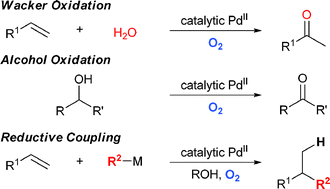
Chem. Commun., 2009, 3854-3867
https://doi.org/10.1039/B902868D
Chemical sensing and imaging with metallic nanorods
The synthesis of gold nanorods has been well-described in the literature. The optical properties of gold nanorods are receiving great attention as novel chemical sensing and biological imaging agents.
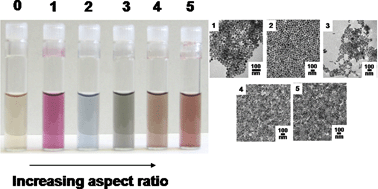
Chem. Commun., 2008, 544-557
https://doi.org/10.1039/B711069C
Metallo-intercalators and metallo-insertors
The design of octahedral metal complexes that bind DNA non-covalently and react with site-specifity are described. We focus on complexes that bind utilizing metallo-intercalation or that target single base mismatches through metallo-insertion.
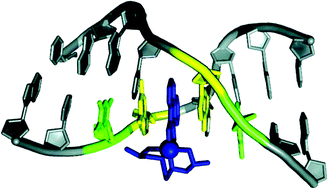
Chem. Commun., 2007, 4565-4579
https://doi.org/10.1039/B710949K
Mesoporous silica nanoparticle based controlled release, drug delivery, and biosensor systems
This review highlights recent advances in controlled release drug/gene delivery and biosensor applications of mesoporous silica nanoparticles (MSN) along with investigations regarding cellular uptake and internalization.

Chem. Commun., 2007, 3236-3245
https://doi.org/10.1039/B701744H
Structural diversity and chemical trends in hybrid inorganic–organic framework materials
We examine the emerging chemical and structural trends in the field of inorganic–organic framework structures and discuss some of the nascent applications of this vast and exciting class of materials.
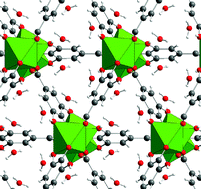
Chem. Commun., 2006, 4780-4795
https://doi.org/10.1039/B610264F
Palladium -catalyzed direct arylation of simple arenes in synthesis of biaryl molecules
Intramolecular and intermolecular catalytic direct arylation reactions of simple arenes: methodological development and application in organic synthesis

Chem. Commun., 2006, 1253-1264
https://doi.org/10.1039/B515481M
Fast, easy, clean chemistry by using water as a solvent and microwave heating: the Suzuki coupling as an illustration
Water is an excellent solvent for organic chemistry and microwave heating offers very efficient heating. In this article, the use of these two techniques in the Suzuki coupling reaction is discussed.
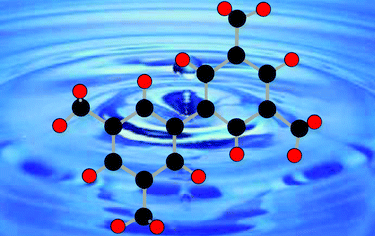
Chem. Commun., 2005, 2881-2902
https://doi.org/10.1039/B500952A
Crystal engineering of the composition of pharmaceutical phases. Do pharmaceutical co-crystals represent a new path to improved medicines?
The current and potential impact of crystal engineering on how the pharmaceutical industry evolves its approach towards formulation of active pharmaceutical ingredients (API's) is featured in the context of polymorphs and co-crystals. Carbamazepine, an API that exemplifies the issues and challenges raised by polymorphs and co-crystals, forms co-crystals with saccharin as illustrated.
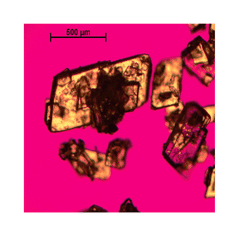
Chem. Commun., 2004, 1889-1896
https://doi.org/10.1039/B402150A
Beyond crystallography : the study of disorder, nanocrystallinity and crystallographically challenged materials with pair distribution functions
Some of the more spectacular successes of atomic pair distribution function (PDF) analysis of powder diffraction data in studying the structure of complex materials and compounds.
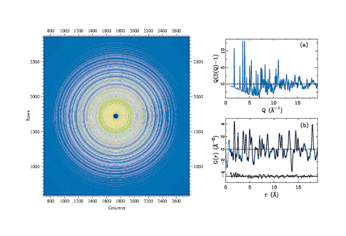
Chem. Commun., 2004, 749-760
https://doi.org/10.1039/B309577K
Tandem reactions, cascade sequences, and biomimetic strategies in total synthesis
Chem. Commun., 2003, 551-564
https://doi.org/10.1039/B209440C
Superstructural diversity in two dimensions: crystal engineering of laminated solids
Chem. Commun., 2001, 1-9
https://doi.org/10.1039/B007127G
Light-harvesting dendrimers
Chem. Commun., 2000, 1701-1710
https://doi.org/10.1039/B005993P
Host–guest chemistry of calixarene capsules
Chem. Commun., 2000, 637-643
https://doi.org/10.1039/A910339M
Fullerenes: three dimensional electron acceptor materials
Chem. Commun., 2000, 321-327
https://doi.org/10.1039/A907807J
A ZnCl2 water-in-salt electrolyte for a reversible Zn metal anode
We report a low-cost water-in-salt electrolyte (WiSE), of 30 m ZnCl2, which enables a dendrite-free Zn metal anode to possess a high coulombic efficiency.
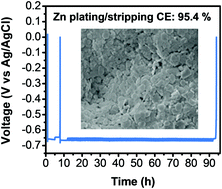
Chem. Commun., 2018,54, 14097-14099
https://doi.org/10.1039/C8CC07730D
Edge-rich and dopant-free graphene as a highly efficient metal-free electrocatalyst for the oxygen reduction reaction
An edge-rich and dopant-free ORR electrocatalyst was designed by the plasma etching strategy and the as-designed catalyst shows a one-step and four-electron pathway.

Chem. Commun., 2016,52, 2764-2767
https://doi.org/10.1039/C5CC09173J
One-step synthesis of nanocrystalline transition metal oxides on thin sheets of disordered graphitic carbon by oxidation of MXenes
Herein we show that heating 2D Ti3C2 in air resulted in TiO2 nanocrystals on thin sheets of disordered graphitic carbon structures that can handle extremely high cycling rates when tested as anodes in lithium ion batteries.

Chem. Commun., 2014,50, 7420-7423
https://doi.org/10.1039/C4CC01646G
A facile synthesis of UiO-66, UiO-67 and their derivatives
Including HCl in the synthesis of UiO-66 produces material with higher than expected surface area due to presence of missing linkers per zirconium-cluster nodes.
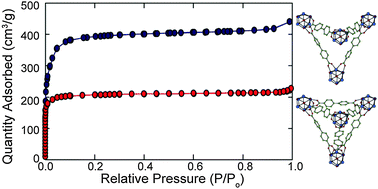
Chem. Commun., 2013,49, 9449-9451
https://doi.org/10.1039/C3CC46105J
A new approach to improve cycle performance of rechargeable lithium–sulfur batteries by inserting a free-standing MWCNT interlayer
A conductive/porous MWCNT interlayer effectively reduces the impedance and retains the dissolved active material in Li–S cells.
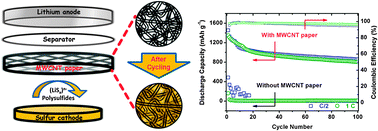
Chem. Commun., 2012,48, 8817-8819
https://doi.org/10.1039/C2CC33945E
Prussian blue: a new framework of electrode materials for sodium batteries
Prussian blue and its analogues consisting of different transition-metal ions (Fe, Mn, Ni, Cu, Co and Zn) have been synthesized at room temperature.
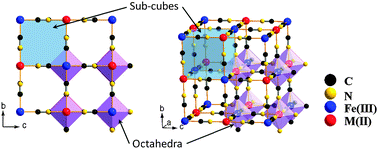
Chem. Commun., 2012,48, 6544-6546
https://doi.org/10.1039/C2CC31777J
High capacity, reversible alloying reactions in SnSb/C nanocomposites for Na-ion battery applications
A well dispersed SnSb/C nanocomposite is demonstrated as anode for Na-ion batteries. The electrode could deliver a capacity of over 500 mA h g−1 based on alloying reactions with good rate capability and cyclability.

Chem. Commun., 2012,48, 3321-3323
https://doi.org/10.1039/C2CC17129E
Graphene -enveloped sulfur in a one pot reaction: a cathode with good coulombic efficiency and high practical sulfur content
Graphene–sulfur composites with sulfur contents as high as 87 wt% are prepared using a simple one-pot, scalable method. The graphene envelops the sulfur particles, providing a conductive shrink-wrap for electron transport. These materials are efficient cathodes for Li–S batteries, yielding 93% coulombic efficiency over 50 cycles with good capacity.

Chem. Commun., 2012,48, 1233-1235
https://doi.org/10.1039/C2CC16726C
The rechargeable aluminum-ion battery
We report the first example of an Al-ion rechargeable battery comprised of a metallic aluminium anode and a V2O5 nano-wire cathode in an ionic liquid electrolyte.

Chem. Commun., 2011,47, 12610-12612
https://doi.org/10.1039/C1CC15779E
In situ high pressure study of ZIF-8 by FTIR spectroscopy
First in situ high-pressure FTIR spectroscopy revealed strongly contrasting pressure behavior and unusual chemical stability of ZIF-8 under compression.
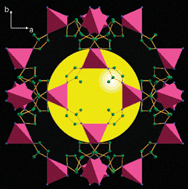
Chem. Commun., 2011,47, 12694-12696
https://doi.org/10.1039/C1CC15525C
A luminescent nanoscale metal–organic framework for sensing of nitroaromatic explosives
The first nanoscale luminescent metal–organic framework has been realized for the straightforward and highly sensitive sensing of nitroaromatic explosives in enthanol solution.
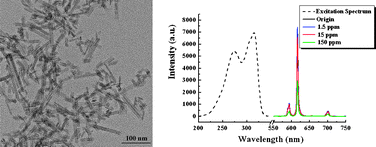
Chem. Commun., 2011,47, 3153-3155
https://doi.org/10.1039/C0CC05166G
Isoreticular synthesis and modification of frameworks with the UiO-66 topology
Amino, bromo, nitro, and naphthalene terephthalic acids were utilized in the isoreticular synthesis of functionalized microcrystalline frameworks with the UiO-66 topology. The amino functionalized framework, UiO-66–NH2, was postsynthetically modified with aliphatic and cyclic anhydrides generating amide-functionalized materials.

Chem. Commun., 2010,46, 7700-7702
https://doi.org/10.1039/C0CC02990D
Nanoceria exhibit redox state-dependent catalase mimetic activity
In this study we have found that cerium oxide nanoparticles exhibit catalase mimetic activity. Surprisingly, the catalase mimetic activity correlates with a reduced level of cerium in the +3 state, in contrast to the relationship between surface charge and superoxide scavenging properties.
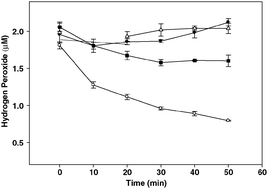
Chem. Commun., 2010,46, 2736-2738
https://doi.org/10.1039/B922024K
Silicon nanoparticles –graphene paper composites for Li ion battery anodes
Composites of Si nanoparticles highly dispersed between graphene sheets, and supported by a 3-D network of graphite formed by reconstituting regions of graphene stacks exhibit high Li ion storage capacities and cycling stability.

Chem. Commun., 2010,46, 2025-2027
https://doi.org/10.1039/B919738A
Urea electrolysis: direct hydrogen production from urine
A new technology has been developed that accomplishes the direct conversion of urine and urea to pure hydrogen via electrochemical oxidation with an inexpensive nickel catalyst.

Chem. Commun., 2009, 4859-4861
https://doi.org/10.1039/B905974A
Photoinduced electron transfers with carbon dots
The photoluminescence in carbon dots could be quenched efficiently by electron acceptor or donor molecules in solution, namely that photoexcited carbon dots are both excellent electron donors and excellent electron acceptors, thus offering new opportunities for their potential uses in light energy conversion and related applications.

Chem. Commun., 2009, 3774-3776
https://doi.org/10.1039/B906252A
Hydrolase-catalyzed biotransformations in deep eutectic solvents
Hydrolases show good catalytic activity in deep eutectic solvents, despite the presence of urea, which can denature enzymes, or alcohols, which can interfere with hydrolase-catalyzed reactions.

Chem. Commun., 2008, 1235-1237
https://doi.org/10.1039/B716317G
Superoxide dismutase mimetic properties exhibited by vacancy engineered ceria nanoparticles
SOD mimetics are currently being tested in clinical trials as novel drugs to reduce superoxide levels in tissues. Vacancy Engineered nanoceria exhibits potent SOD mimetic activity and thus may represent a novel class of nanomaterials that can be further developed into clinical applications in the near future.
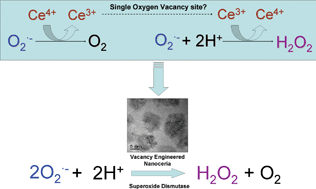
Chem. Commun., 2007, 1056-1058
https://doi.org/10.1039/B615134E
Synthesis of well-defined hydrogel networks using Click chemistry
New PEG-based hydrogel materials have been synthesized by Click chemistry and shown to result in well-defined networks having significantly improved mechanical properties.
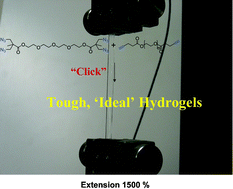
Chem. Commun., 2006, 2774-2776
https://doi.org/10.1039/B603438A
A metal–organic framework material that functions as an enantioselective catalyst for olefin epoxidation
A new crystalline microporous metal–organic framework compound featuring chiral (salen)Mn struts is long-lived and highly effective as a substrate-size-selective asymmetric catalyst for olefin epoxidation.
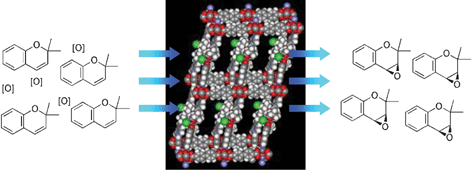
Chem. Commun., 2006, 2563-2565
https://doi.org/10.1039/B600408C
Extractive electrospray ionization for direct analysis of undiluted urine, milk and other complex mixtures without sample preparation
On-line droplet–droplet extraction and electrospray ionization for direct, continual analysis by mass spectrometry of trace components in complex samples such as raw undiluted urine.

Chem. Commun., 2006, 2042-2044
https://doi.org/10.1039/B602614A
Mechanism of cellulose dissolution in the ionic liquid 1-n-butyl-3-methylimidazolium chloride : a 13C and 35/37Cl NMR relaxation study on model systems
13C and 35/37Cl NMR relaxation measurements on several model systems demonstrate that the solvation of cellulose by the ionic liquid (IL) 1-n-butyl-3-methylimidazolium chloride ([C4mim]Cl) involves hydrogen-bonding between the carbohydrate hydroxyl protons and the IL chloride ions in a 1 ∶ 1 stoichiometry.
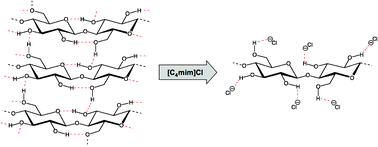
Chem. Commun., 2006, 1271-1273
https://doi.org/10.1039/B600586C
Multivalent, bifunctional dendrimers prepared by click chemistry
Unsymmetrical dendrimers, containing both mannose binding units and coumarin fluorescent units, have been prepared using click chemistry and shown to be highly efficient, dual-purpose recognition/detection agents for the inhibition of hemagglutination.
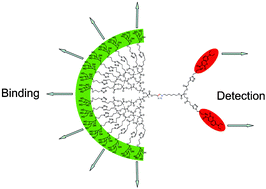
Chem. Commun., 2005, 5775-5777
https://doi.org/10.1039/B512021G
Direct, trace level detection of explosives on ambient surfaces by desorption electrospray ionization mass spectrometry
Mass spectrum of RDX recorded at a level of 50 fmol mm−2 from a non-conducting surface in a time of a few seconds without any sample preparation.
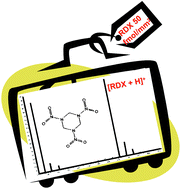
Chem. Commun., 2005, 1950-1952
https://doi.org/10.1039/B418697D
Synthetic self-propelled nanorotors
Self-powered nanorotors have been prepared from barcoded gold–nickel nanorods having the gold end anchored to the surface of a silicon wafer. Constant velocity circular movements are observed when hydrogen peroxide fuel is catalytically decomposed to oxygen at the unattached nickel end of the nanorod.

Chem. Commun., 2005, 441-443
https://doi.org/10.1039/B414896G
Synthesis of monodisperse iron oxide nanocrystals by thermal decomposition of iron carboxylate salts
Iron oxide (Fe3O4, magnetite) nanocrystals of 6 to 30 nm with narrow size distributions (σ = 5–10%) were prepared by the pyrolysis of iron carboxylate salts.

Chem. Commun., 2004, 2306-2307
https://doi.org/10.1039/B409601K
Liquid clathrate formation in ionic liquid–aromatic mixtures
Liquid clathrate formation appears as a general phenomena when common ionic liquids are mixed with aromatic hydrocarbons. In the system 1,3-dimethylimidazolium hexafluorophosphate–benzene, the aromatic solute was also trapped as a crystalline 2∶1 inclusion compound.
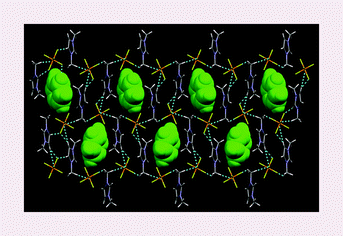
Chem. Commun., 2003, 476-477
https://doi.org/10.1039/B212726A
Crystal engineering of the composition of pharmaceutical phases
The
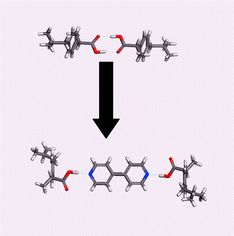
Chem. Commun., 2003, 186-187
https://doi.org/10.1039/B208574G
New, efficient electroluminescent materials based on organometallic Ir complexes
Chem. Commun., 2001, 1494-1495
https://doi.org/10.1039/B103490C
Wet chemical synthesis of silver
Chem. Commun., 2001, 617-618
https://doi.org/10.1039/B100521I
How polar are room-temperature ionic liquids?
Chem. Commun., 2001, 413-414
https://doi.org/10.1039/B008039J
Dissolution of small diameter single-wall carbon nanotubes in organic solvents?
Chem. Commun., 2001, 193-194
https://doi.org/10.1039/B008042J
Task-specific ionic liquids for the extraction of metal ions from aqueous solutions
Chem. Commun., 2001, 135-136
https://doi.org/10.1039/B008041L
Ag nanowire formation within mesoporous silica
Chem. Commun., 2000, 1063-1064
https://doi.org/10.1039/B002549F
Room temperature ionic liquids as novel media for ‘clean’ liquid–liquid extraction
Metal-bound chlorine often accepts hydrogen bonds
Calixpyrroles
About this collection
Chemical Communications is publishing its 60th volume in 2024. Over the past 60 years, ChemComm has been the RSC’s most cited journal, and one of the most trusted venues for rapid publication of short communications. In our anniversary year, we recognise the important contributions ChemComm has made, and continues to make, in advancing the chemical sciences.
On this occasion, we bring together 60 significant historic papers published in ChemComm from each region. This special collection highlights 60 pioneering papers that were most cited from the researchers in United States and Canada. Please join us in revisiting some of the papers that made ChemComm one of your most trusted venues for publication.